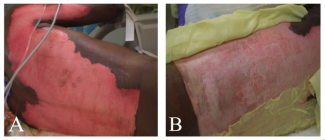ADVERTISEMENT
External Skeletal Fixation in Reconstruction of Lower Limb Combining Soft Tissue and Osseous Pathology
External Skeletal Fixation in Reconstruction of Lower Limb Combining Soft Tissue and Osseous Pathology from HMP on Vimeo.
In this video, Dr. Theodoulou, DPM, FACFAS, discusses the use of external skeletal fixation and its role in orthoplastics.
Video Transcript
Dr. Michael Theodoulou: My name is Michael Theodoulou. I'm a Chief of the Division of Pediatric Surgery at Cambridge Hospital and an instructor of surgery at Harvard Medical School.
Question 1: What are the indications for use for external skeletal fixation in reconstruction of lower limb combining soft tissue and osseous pathology, and when should it be considered?
Dr. Theodoulou: External fixation type devices in the orthoplastic realm is principally worked around for deformity correction, bone void or bone loss, and protection of soft tissue envelopes in correction and repair of soft tissue defects, or in offloading soft tissue injuries.
Question 2: What are the benefits of employing this approach?
Dr. Theodoulou: It allows us particularly in many wounds where we identify these wounds oftentimes represent a ischemia reperfusion type injuries that recur because of inability to offload. We use these to protect our wound sites, whether that be the traumatic wound itself, or even the flap or soft tissue reconstructions to prevent this type of ongoing cycle of ischemia reperfusion.
Question 3: What are some of the potential risks and complications?
Dr. Theodoulou: These are wires driven, extrinsically through soft tissue, or pins driven through soft tissue into bones, so we have direct exposure to the environment. Pinch tract infections are clearly a significant concern if not appropriately employed.
We also have to rely notably on patient compliance and adherence to protocols with these devices, as the patients are living with them and they are external platforms that we use to manage internal defects, and again, the soft tissue defects.
Question 4: What key takeaway messages would you like to offer clinicians regarding this approach?
Dr. Theodoulou: Have a low threshold for their use, particularly when you're dealing with protection of soft tissue in the management of chronic wounds, or local skin rearrangements and flaps, these should be considered pretty immediately because the benefits far outweigh the other risks associated with them.
Question 5: In the world of ortho plastics, where does external fixation come into play?
Dr. Theodoulou: This newly specialized field of combination of orthopedic management and plastic surgery, external fixation has a significant role in managing combined injury states, whether that be a soft tissue and soft tissue and bone.
When we're dealing with bone defects, whether it is traumatic, iatrogenic, oncologic, or infectious, we can address those bone defects or bone transport techniques, but at the same time, address the concomitant soft tissue injuries with our wound closures and skin flaps and protect those skin flaps with this type of device.














